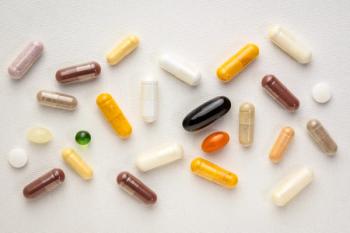
Cold Sore Outbreak?
This article is brought to you by GlaxoSmithKline Consumer Healthcare
Imagine this common scenario: you notice tingling of the lips; in a day or 2, you notice a few red blisters. Cold sores, "fever blisters," whatever they may be called, are quite common, highly contagious, and a real pain. Cold sores have a physical, social, and emotional impact, which may cause pain and discomfort, as well as feelings of embarrassment, which ultimately may lead to social isolation.
What Are Cold Sores?
Cold sores are lesions caused by the herpes simplex virus 1 (HSV-1) and are also referred to as herpes simplex labialis because they usually appear on the lips and bordering areas. They may also appear on the face, chin, and nose. The initial HSV-1 infection typically occurs within the first few years of life and is associated with mild-to-moderate fever and discomfort.
Cold sores, which are caused by a virus, are often confused with canker sores, which are not caused by a virus and, in fact, have no known cause. It is estimated that approximately 80% to 90% of the population is affected, although it is possible to have the virus and never get a cold sore; yet, for many (about 20%-40%), repeated outbreaks are common. The virus usually appears for the first time in early childhood and remains in the body after the initial episode. After the primary infection, the virus remains dormant until it reactivates and infects skin cells.
What Are Signs and Symptoms?
Symptoms may not appear for several weeks after the first exposure (likely before age 12) to the virus. Adults, however, generally develop symptoms when the virus is triggered. Some people may experience a "prodrome" episode, or the early signs and symptoms before the full-blown syndrome, within 8 to 72 hours after reactivation of the virus. It consists of pain, burning, tingling, or itching before the first blisters appear. (About 25% to 30% of patients do not experience prodrome symptoms, however, and the first sign is the appearance of a cold sore.) Within the next 24 hours, fluid-filled blisters appear, eventually leaking fluid, cracking, and forming a yellow crust, accompanied by itching or burning. The scab may crack and bleed?finally falling off and leaving behind some redness and swelling. The healing process takes approximately 8 to 10 days.
To summarize, the following is a brief description of the stages a cold sore goes through:
- Days 1-2: The tingle stage
- Days 2-4: The blister stage
- Day 4: The ulcer stage
- Days 5-8: The scabbing stage
- Days 8-10: The healing stage
What Over-the-counter Treatments Are Available?
The goals in treating cold sores are to relieve the symptoms, control discomfort and pain, as well as shorten the healing process. Many products available over the counter are safe and effective in relieving cold sore symptoms.
Skin protectants?such as petroleum jelly or petrolatum, allantoin, glycerin, and cocoa butter?help soften the skin. This effect helps keep the lesions moist and reduces the chance of dryness.
External analgesics and anesthetics?such as benzocaine, lidocaine, dibucaine, camphor, menthol, and benzyl alcohol?are considered safe and effective in temporarily relieving pain and itching caused by the lesions. (Products with a high content of menthol and camphor may produce irritation.) Oral analgesics (eg, acetaminophen, aspirin, and ibuprofen) can also be used to relieve pain.
The efficacy of astringents has been questionable, as they can overdry the area and may damage the skin, as well as impair the healing process. Zinc formulations are also available, but their efficacy has not been clearly established.
Cell entry blockers. Abreva (docosanol), approved by the FDA for treatment of cold sores, is the only nonprescription medication that shortens the healing time and duration of symptoms. Abreva, which contains 10% docosanol, helps protect against the virus by modifying the cell membrane and preventing the ability of the virus to combine with the cell. This change makes it difficult for the virus to penetrate the cell. It is important to use Abreva as soon as the first symptoms (redness, itching, tingling) appear. The sooner you start, the fewer infected cells there are likely to be, as Abreva helps protect healthy cells before they become infected. In fact, it is a good idea to carry Abreva with you at all times in the event of a cold sore episode. Abreva can be used by those 12 years of age and over; you should apply it 5 times a day until the lesions heal. Always remember to wash your hands before and after application, and avoid applying Abreva directly inside the mouth or near the eyes. If the lesions are still present after 10 days, you should consult a physician.
Key Points You Should Remember?
- Use a lip moisturizer to prevent chapping
- Apply sunblock containing SPF to the lips and face before exposure to sun
- Avoid skin contact with people while lesions are present
- Avoid sharing items that can spread the virus, and wash hands frequently
- Avoid triggers?get plenty of rest and sleep, avoid stress
- Carry Abreva with you in the event of a cold sore episode so you can protect the healthy cells at the first sign of your cold sore outbreak
- Contact your physician if the cold sore lasts more than 10 days SPF = sun protection factor.
Dr. Pelegrin is the pharmacy manager of a Publix Pharmacy in Miami, Fla.
Newsletter
Stay informed on drug updates, treatment guidelines, and pharmacy practice trends—subscribe to Pharmacy Times for weekly clinical insights.






































































































































































































